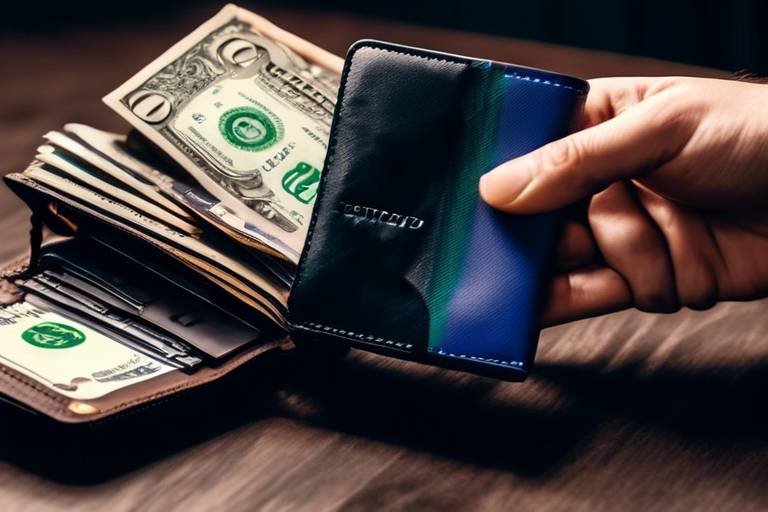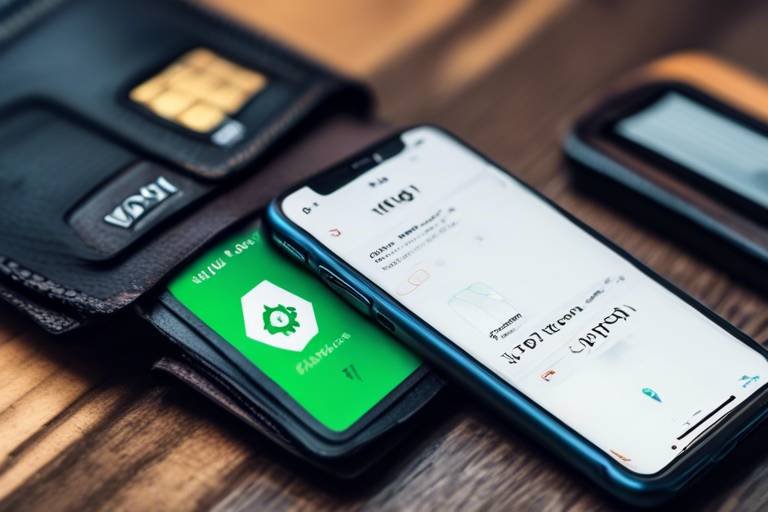How to Use Wallets for Educational Purposes in Crypto
In today's digital age, understanding cryptocurrency is akin to learning a new language. Just like any language, the vocabulary and tools can be daunting at first. One of the most essential tools in the crypto world is the wallet. But how can these wallets serve as educational platforms? This article explores the various ways wallets can be utilized for educational purposes in the cryptocurrency space, enhancing understanding and practical skills while navigating digital assets.
Before diving into the educational aspects, it's crucial to grasp what crypto wallets are. Simply put, a crypto wallet is a digital tool that allows you to store, send, and receive cryptocurrencies. They come in various forms, each with unique functionalities and security measures. From hot wallets that are connected to the internet for ease of access to cold wallets that store your assets offline for enhanced security, understanding these types is fundamental. For both beginners and advanced users, wallets play a pivotal role in the cryptocurrency ecosystem, serving as the gateway to managing digital assets.
Setting up a cryptocurrency wallet might seem intimidating, but it’s a straightforward process that can be incredibly rewarding. Here’s a step-by-step guide to help you get started:
- Choose a Wallet Type: Decide between a hot wallet for convenience or a cold wallet for security.
- Download or Purchase: For hot wallets, download the application; for cold wallets, purchase from a reputable source.
- Create an Account: Follow the prompts to set up your account, ensuring you choose a strong password.
- Backup Your Wallet: Most wallets will prompt you to back up your recovery phrase. Write this down and store it securely.
This process not only equips you with a wallet but also introduces you to the basics of blockchain technology, making it a valuable learning experience.
When selecting a crypto wallet, several factors come into play. Security features should be your top priority; after all, your assets are on the line. Look for wallets that offer two-factor authentication and strong encryption. User interface is another critical aspect; a wallet that’s easy to navigate will enhance your learning experience. Finally, ensure the wallet is compatible with the cryptocurrencies you intend to use. This careful consideration will provide a smoother educational journey in the crypto world.
Hot wallets and cold wallets serve different purposes and come with their own sets of advantages and disadvantages:
| Type | Advantages | Disadvantages |
|---|---|---|
| Hot Wallets |
|
|
| Cold Wallets |
|
|
Backing up your wallet is crucial. Imagine losing access to your bank account; the same applies here. Your recovery phrase is your lifeline, and losing it could mean losing your assets forever. It’s essential to keep this phrase in a secure location, preferably offline. Consider using a password manager or writing it down and storing it in a safe place. This simple act of diligence ensures that your educational resources remain accessible and secure, allowing you to focus on learning rather than worrying about losing your investments.
Wallets can be powerful educational tools. For instance, you can conduct transactions with small amounts of cryptocurrency to understand how transfers work. Tracking your investments through your wallet can also provide insights into market trends and personal financial management. Additionally, participating in blockchain projects can deepen your practical knowledge. Whether it’s through staking or using decentralized applications (dApps), the hands-on experience gained through your wallet can be invaluable.
Using wallets also opens doors to engaging with crypto communities. Many forums and social media groups focus on sharing knowledge about cryptocurrencies and blockchain technology. Your wallet allows you to participate in discussions, ask questions, and share experiences. This collaborative environment fosters learning and can be a great way to stay updated on the latest trends and technologies.
Another exciting way to use your wallet for educational purposes is by participating in airdrops and giveaways. These events often require you to hold a certain cryptocurrency in your wallet, providing a hands-on experience with various digital assets. It’s like getting free samples at a store; you get to try different cryptocurrencies without any financial commitment, enhancing your understanding of their applications and potential.
Your wallet can also serve as a tool for tracking market trends and personal investments. By regularly checking your wallet, you can analyze price movements and understand market dynamics. This practice not only sharpens your analytical skills but also helps you develop a deeper understanding of the cryptocurrency market. Think of it as a fitness tracker for your financial health; the more you monitor, the better you become at making informed decisions.
- What is the safest type of wallet? Cold wallets are generally considered the safest as they are not connected to the internet.
- Can I use multiple wallets? Absolutely! Many users opt for both hot and cold wallets to balance convenience and security.
- What should I do if I lose my recovery phrase? Unfortunately, if you lose your recovery phrase, you may lose access to your wallet and assets. Always back it up securely.

Understanding Crypto Wallets
In the ever-evolving world of cryptocurrency, understanding crypto wallets is crucial for anyone looking to dive into this digital frontier. A crypto wallet is not just a simple storage solution; it's a gateway to managing, sending, and receiving digital assets. Think of it as your personal vault where your cryptocurrencies are securely kept, but unlike a traditional vault, your crypto wallet interacts directly with the blockchain, the underlying technology that powers cryptocurrencies.
There are primarily two types of wallets: hot wallets and cold wallets. Hot wallets are connected to the internet and are typically more user-friendly, making them ideal for beginners who want quick access to their assets. On the other hand, cold wallets are offline storage solutions, providing enhanced security by keeping your assets away from potential online threats. This can be likened to keeping your valuables in a safety deposit box rather than in your home where they could be easily accessed.
Understanding the functionalities of these wallets is equally important. A crypto wallet allows you to perform various operations, including sending and receiving cryptocurrencies, viewing your transaction history, and managing multiple digital currencies. Each wallet comes with its unique user interface, which can range from simple and intuitive to complex and feature-rich. As you embark on your educational journey in the crypto space, familiarizing yourself with these functionalities will empower you to navigate the blockchain landscape confidently.
Moreover, security is paramount in the world of cryptocurrencies. With the rise of digital assets, the incidence of hacking and scams has also increased. Therefore, using a wallet with robust security features, such as two-factor authentication (2FA) and encryption, is essential. Think of it as locking your front door and installing an alarm system to protect your home. The safer your wallet, the more secure your assets will be.
In addition to security and functionality, the importance of crypto wallets extends to their role in the broader cryptocurrency ecosystem. For beginners, wallets serve as an educational tool that provides firsthand experience with blockchain technology. By engaging with your wallet, you learn not only how to manage your digital assets but also gain insights into how transactions are processed on the blockchain. This hands-on experience can significantly enhance your understanding of the technology.
In conclusion, understanding crypto wallets is the first step in your cryptocurrency journey. Whether you're a novice or an experienced user, knowing the types of wallets, their functionalities, and their importance will set the foundation for your success in the digital asset space. As you explore further, remember that your wallet is more than just a tool; it's an essential part of your learning experience in the fascinating world of cryptocurrency.
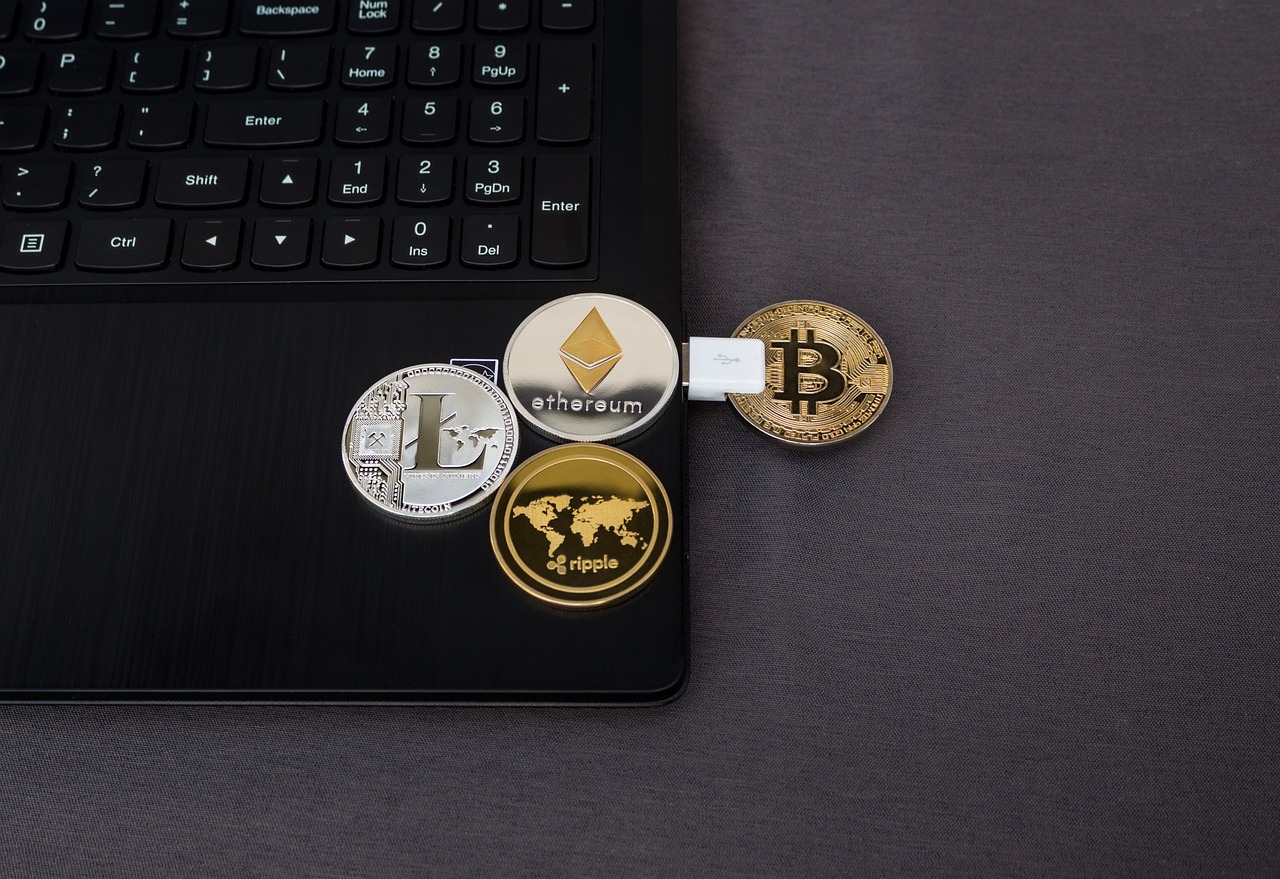
Setting Up a Wallet
Setting up a cryptocurrency wallet might seem daunting at first, but it’s actually quite straightforward. Think of it as setting up a bank account, but instead of storing traditional currency, you’re managing digital assets. The first step is to choose the type of wallet that suits your needs. There are several options available, including hot wallets, which are connected to the internet, and cold wallets, which are offline and provide enhanced security. Each has its own set of functionalities and serves different purposes, so it’s essential to understand what you’re looking for before diving in.
Once you’ve selected the right type of wallet, you’ll want to download or purchase it. For software wallets, this typically involves downloading an app or software program. If you’re opting for a hardware wallet, you’ll need to order it online and wait for it to arrive. Regardless of the method, be sure to download from reputable sources to avoid scams. Always remember, in the crypto world, security is paramount.
After installation, you’ll need to create a wallet. This process usually involves generating a new wallet address, which is like your bank account number. You’ll also be provided with a recovery phrase—a series of words that can help you recover your wallet if you lose access. It’s crucial to write this phrase down and store it in a safe place. Think of it like the key to your front door; without it, you can’t get in!
Next, you’ll need to fund your wallet. This can be done by purchasing cryptocurrency from an exchange and transferring it to your wallet address. When you make this transfer, be sure to double-check the address. Sending funds to the wrong address can result in permanent loss of your assets. It’s like sending a letter to the wrong address; once it’s gone, it’s gone!
To help you visualize the setup process, here’s a simple table outlining the steps involved:
| Step | Action |
|---|---|
| 1 | Choose the type of wallet (hot or cold) |
| 2 | Download or purchase the wallet |
| 3 | Create a new wallet and write down your recovery phrase |
| 4 | Fund your wallet by transferring cryptocurrency |
As you get comfortable with your wallet, take the time to explore its features. Many wallets offer additional functionalities, such as transaction tracking and integration with decentralized applications. This exploration can enhance your understanding of how cryptocurrencies operate and provide valuable hands-on experience. Remember, the more you engage with your wallet, the more confident you’ll become in navigating the world of digital assets.
In conclusion, setting up a cryptocurrency wallet is a fundamental step in your crypto journey. It opens the door to a world of possibilities, from trading to learning about blockchain technology. So, take that leap, set up your wallet, and start your educational adventure in the exciting realm of cryptocurrencies!

Choosing the Right Wallet
When it comes to navigating the vast world of cryptocurrency, selecting the right wallet is akin to choosing the perfect backpack for a hiking adventure. You want something that is not only functional but also secure and tailored to your needs. The right wallet can significantly enhance your learning experience in the crypto space, allowing you to manage your digital assets with confidence. So, what should you consider when making this crucial decision?
First and foremost, security features are paramount. In a digital landscape where threats lurk around every corner, ensuring your assets are protected should be your top priority. Look for wallets that offer advanced security options such as two-factor authentication (2FA) and multi-signature support. These features act like a security guard for your digital treasures, providing an extra layer of protection against unauthorized access.
Next, consider the user interface. A wallet should not only be secure but also user-friendly. If you’re new to cryptocurrency, a complicated interface can be overwhelming and might hinder your learning process. Opt for wallets that offer a clean, intuitive design, making it easier for you to navigate and manage your assets. Think of it as choosing a smartphone; you want something that feels comfortable in your hands and doesn’t require a manual just to send a text!
Another critical factor is compatibility with different cryptocurrencies. Not all wallets support every digital asset, so it’s essential to choose one that aligns with your investment interests. If you plan to explore various cryptocurrencies, consider a multi-currency wallet that allows you to store different types of coins all in one place. This flexibility can be incredibly beneficial as you expand your knowledge and experience in the crypto world.
Lastly, take some time to read user reviews and seek recommendations from experienced users. The crypto community is vibrant and full of insights. Engaging with forums or social media groups can provide you with firsthand accounts of different wallets' performances and reliability. It’s like asking fellow travelers about their favorite trails—personal experiences can guide you to the best choices.
In summary, choosing the right wallet involves a careful consideration of security, usability, compatibility, and community feedback. By taking these factors into account, you can ensure that your wallet not only serves its purpose but also enhances your educational journey in the cryptocurrency space. Remember, the right tools can make all the difference, turning a daunting task into an exciting adventure!
- What is the safest type of wallet for beginners?
For beginners, a hardware wallet is often considered the safest option due to its offline storage capabilities. However, if you're looking for ease of use, a reputable software wallet can also be a good starting point.
- Can I change wallets later on?
Absolutely! You can switch wallets anytime. Just ensure you follow the correct backup and recovery procedures to avoid losing access to your assets.
- Are all wallets free to use?
While many wallets are free, some may charge transaction fees or have premium features that come at a cost. Always check the fee structure before committing.
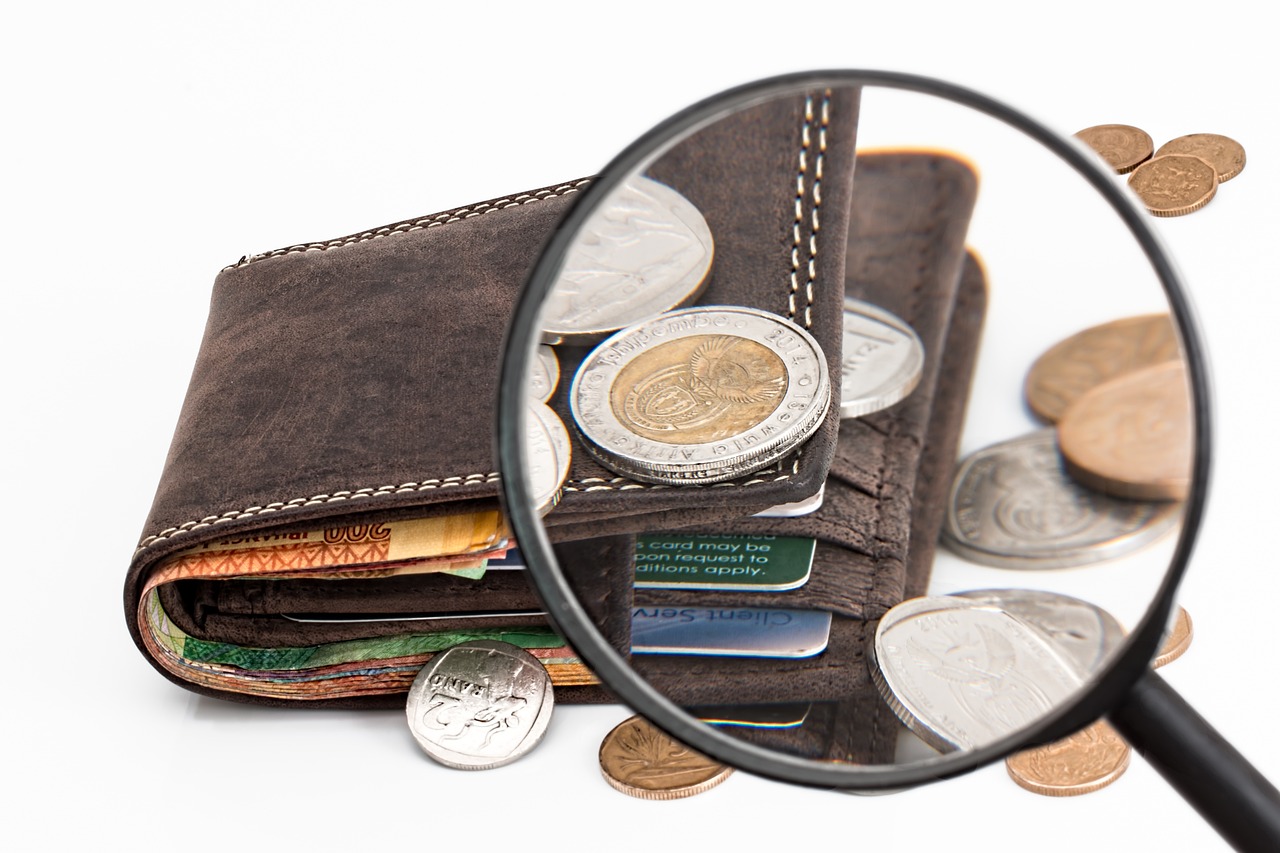
Hot Wallets vs. Cold Wallets
When diving into the world of cryptocurrency, one of the first decisions you’ll face is the choice between hot wallets and cold wallets. Each type has its own unique characteristics, advantages, and disadvantages that can significantly impact your educational journey in the crypto space. Understanding these differences is crucial, especially if you want to navigate the digital asset landscape safely and effectively.
Hot wallets are digital wallets that are connected to the internet. They are typically more user-friendly and accessible, making them ideal for beginners who are just starting to learn about cryptocurrency. With hot wallets, you can quickly send and receive transactions, which can be a great way to practice and get a feel for how digital currencies work. However, this convenience comes at a cost; being online makes hot wallets more vulnerable to hacking attempts and cyber threats. As a learner, while you may appreciate the ease of access, it’s essential to remain vigilant about security practices.
On the other hand, cold wallets are offline storage solutions, which can be as simple as a hardware device or even a piece of paper with your private keys written on it. Because they are not connected to the internet, cold wallets offer a higher level of security against online threats. This makes them an excellent choice for long-term storage of cryptocurrencies, especially if you’re holding onto assets while you study market trends and investment strategies. However, the downside is that accessing your funds can be less convenient, which might hinder your ability to conduct frequent transactions as you learn.
| Feature | Hot Wallets | Cold Wallets |
|---|---|---|
| Accessibility | Highly accessible, ideal for daily transactions | Less accessible, better for long-term storage |
| Security | More vulnerable to hacking | Highly secure, offline storage |
| User Experience | Easy to use, great for beginners | Requires more technical knowledge to manage |
| Best For | Frequent trading and transactions | Long-term holding and investment |
In summary, both hot and cold wallets have their place in the educational toolkit of anyone interested in cryptocurrency. If you’re starting out and want to get hands-on experience with transactions, a hot wallet might be the way to go. However, as you advance in your understanding and accumulate more assets, transitioning some of your holdings to a cold wallet can provide that extra layer of security. Ultimately, the choice depends on your individual learning objectives and how you plan to engage with the crypto ecosystem.
- What is a hot wallet? A hot wallet is an online wallet that allows for quick access to your cryptocurrencies, making it ideal for frequent transactions.
- What is a cold wallet? A cold wallet is an offline storage option for cryptocurrencies, providing enhanced security against online threats.
- Which wallet is safer? Cold wallets are generally considered safer due to their offline nature, while hot wallets are more vulnerable to hacking.
- Can I use both types of wallets? Yes, many users opt to use both hot and cold wallets to balance accessibility and security.
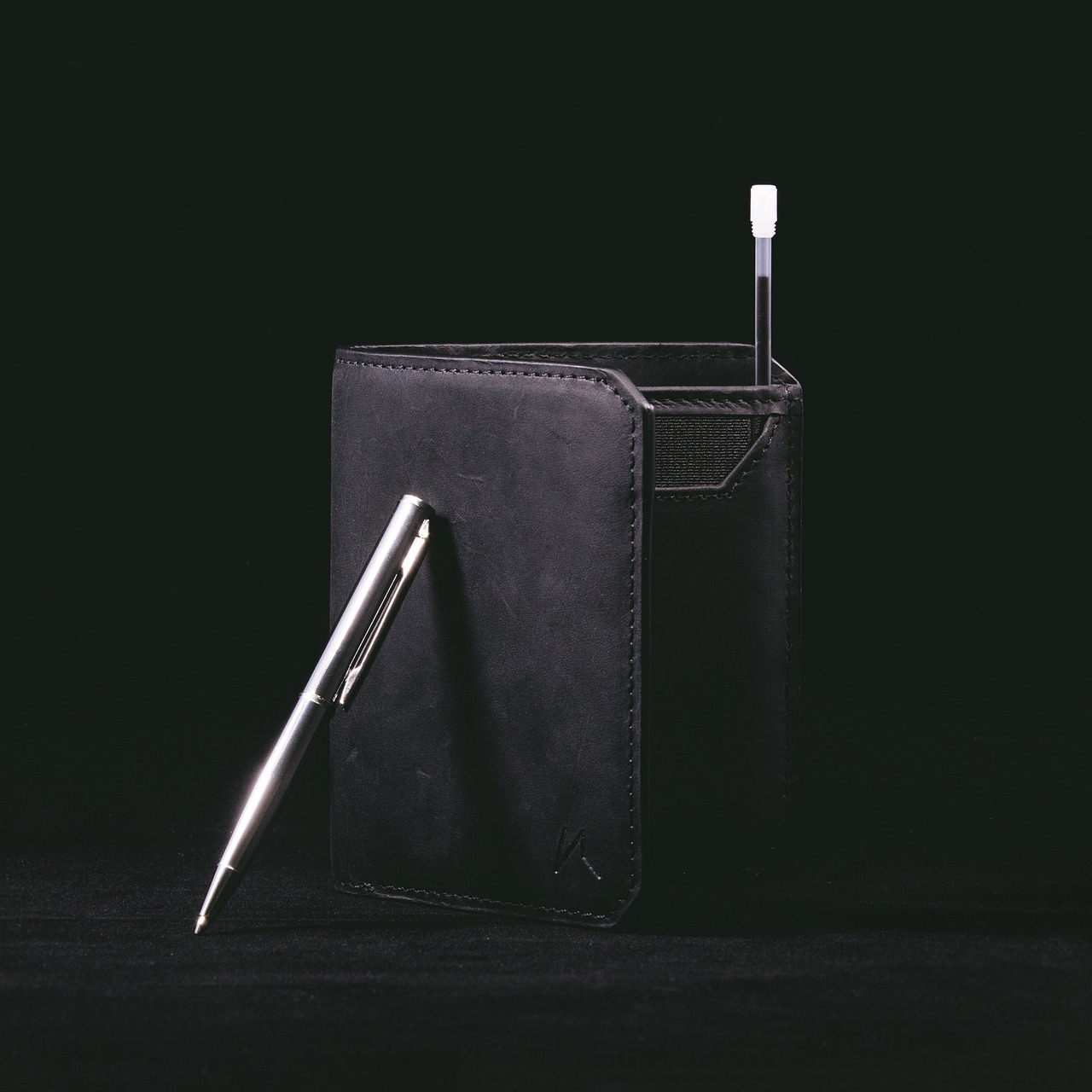
Wallet Backup and Recovery
When it comes to managing your cryptocurrency, one of the most critical aspects to consider is . Imagine putting all your hard-earned digital assets into a wallet, only to lose access due to a forgotten password or a malfunctioning device. It’s like locking your valuables in a safe and misplacing the key! To avoid such a nightmare, understanding how to properly back up and recover your wallet is essential.
Backing up your wallet means creating a secure copy of your wallet data, which can be restored in case of loss, theft, or damage. Most wallets provide a recovery phrase—a series of words generated when you set up your wallet. This phrase acts like a magic key to unlock your wallet from anywhere in the world, as long as you have access to the internet. It’s crucial to store this recovery phrase in a safe place, preferably offline, to protect it from potential hacks or data breaches.
Here are some tips for effective wallet backup and recovery:
- Use a Secure Location: Store your recovery phrase in a secure physical location, such as a safe or safety deposit box, rather than on your computer or mobile device.
- Make Multiple Copies: Create several copies of your recovery phrase and store them in different locations to ensure redundancy.
- Keep Software Updated: Regularly update your wallet software to benefit from the latest security features and fixes.
In case you ever find yourself needing to recover your wallet, the process is typically straightforward. You will need to download the wallet software again, select the option to restore from a backup, and enter your recovery phrase. This process is akin to planting a seed that you’ve nurtured; with the right care (or in this case, the right words), it will bloom back to life.
To help you visualize the importance of wallet backup and recovery, consider the following table:
| Scenario | Backup Importance | Recovery Process |
|---|---|---|
| Lost Device | Access to funds is crucial. | Restore using recovery phrase. |
| Forgotten Password | Prevent loss of access. | Use recovery phrase to regain access. |
| Malware Attack | Protect against theft. | Restore wallet on a secure device. |
In summary, wallet backup and recovery is not just a precaution; it’s a necessity in the ever-evolving world of cryptocurrency. By taking the time to back up your wallet and understand the recovery process, you’re not only protecting your assets but also enhancing your educational journey in the crypto space. After all, knowledge is power, and being prepared is the best way to navigate the unpredictable waters of digital currencies.

Using Wallets for Learning
When it comes to diving into the world of cryptocurrency, wallets are your best friends. They are not just tools for storing digital assets; they are gateways to a wealth of knowledge and practical experience. Imagine walking into a library where every book contains the secrets of the blockchain universe. That's what using a wallet for learning feels like! By engaging with these digital wallets, you can conduct transactions, track investments, and even participate in blockchain projects that significantly enhance your understanding of this innovative technology.
One of the most exciting aspects of using wallets for educational purposes is the ability to conduct real transactions. Think of it as a hands-on workshop where theory meets practice. By sending and receiving small amounts of cryptocurrency, you get to experience the mechanics of how transactions work in real time. This not only demystifies the process but also builds your confidence in handling digital assets. It’s like learning to ride a bike; you can read all the manuals, but nothing beats the actual experience of pedaling down the street!
Additionally, many wallets come equipped with features that allow you to track your investments and monitor market trends. This is crucial for developing analytical skills. For instance, you can analyze how different cryptocurrencies perform over time, which can help you make informed decisions about future investments. This is akin to being a financial detective, piecing together clues from market data to uncover the best strategies for growth. You can even set alerts for price changes, allowing you to react promptly and learn about market dynamics as they unfold.
Moreover, wallets can also serve as a platform for participating in various blockchain projects. By engaging with these projects, you not only learn about the technology behind them but also how they apply to real-world scenarios. For example, consider participating in a decentralized finance (DeFi) project. It’s like being part of a community garden where everyone contributes and shares the fruits of their labor. You can see firsthand how smart contracts work, how liquidity pools are created, and how governance tokens function. This active participation fosters a deeper understanding of the blockchain ecosystem, making the learning experience much richer.
Furthermore, utilizing wallets for educational purposes can also introduce you to the concept of airdrops and giveaways. These events often require you to have a wallet set up, providing an excellent opportunity to learn about different cryptocurrencies and their use cases. Airdrops are like surprise gifts in the crypto world, allowing you to receive free tokens just for having a wallet. This not only adds to your portfolio but also encourages you to research the projects behind those tokens, enhancing your knowledge base.
In summary, wallets are more than just storage solutions; they are powerful educational tools that can transform your understanding of cryptocurrency. By conducting transactions, tracking investments, participating in projects, and engaging with community events, you can immerse yourself in the crypto world like never before. So, are you ready to unlock the treasure trove of knowledge that awaits you in your crypto wallet?
- What is a cryptocurrency wallet? A cryptocurrency wallet is a digital tool that allows you to store, send, and receive cryptocurrencies securely.
- How do I choose the right wallet for educational purposes? Consider factors like security features, user interface, and compatibility with various cryptocurrencies.
- Can I use my wallet for learning without investing a lot of money? Absolutely! You can start with small amounts or even participate in airdrops to learn without significant financial commitment.
- What are the risks of using a crypto wallet for learning? The primary risks include potential loss of funds due to security breaches or forgetting your wallet recovery phrases. Always prioritize security measures.
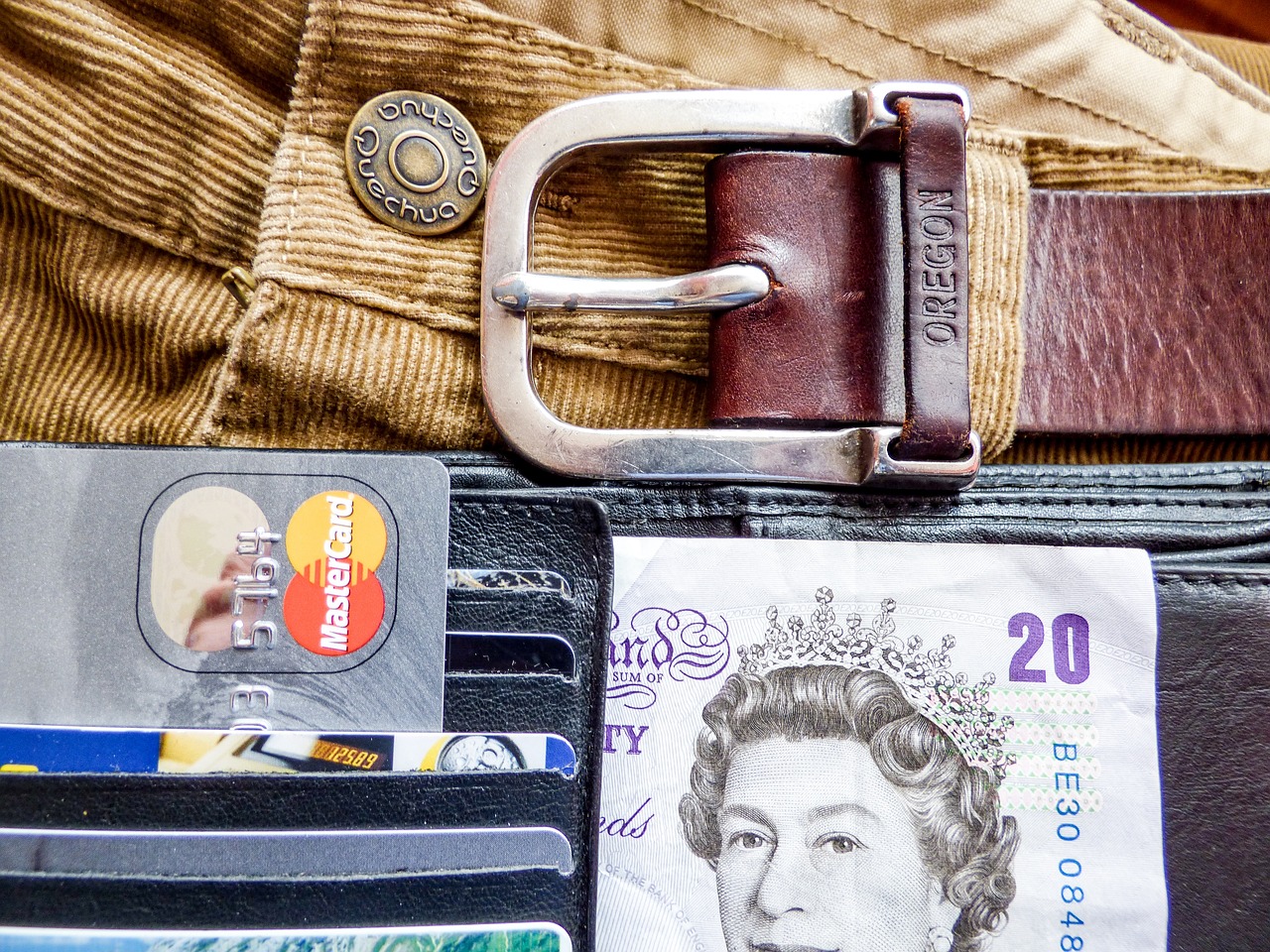
Engaging with Crypto Communities
Engaging with crypto communities is like diving into a vast ocean of knowledge and opportunities. When you start using a cryptocurrency wallet, it opens doors not just to your digital assets but also to a vibrant world of enthusiasts, experts, and learners alike. These communities are the lifeblood of the crypto space, offering a treasure trove of insights, support, and collaboration. By participating in these networks, you can enhance your understanding of cryptocurrencies while also building valuable connections.
One of the most exciting aspects of engaging with crypto communities is the sheer variety of platforms available. From social media groups to dedicated forums, there’s a place for everyone. Whether you prefer the fast-paced discussions on Twitter or the in-depth conversations on Reddit, you can find a community that resonates with your learning style. By sharing your experiences and asking questions, you not only gain knowledge but also contribute to the collective wisdom of the group.
Moreover, many communities host events, webinars, and meetups that can significantly enhance your learning experience. These gatherings often feature industry experts who share their insights and answer questions. Imagine attending a live Q&A session with a blockchain developer or participating in a workshop on DeFi applications! These experiences can be invaluable, providing practical knowledge that goes beyond what you can learn from articles or videos.
In addition to learning, engaging with these communities can also provide you with opportunities to participate in exciting projects. Many community members collaborate on open-source projects or contribute to blockchain initiatives. By getting involved, you can apply what you’ve learned in real-world scenarios, making your educational journey much more dynamic and interactive.
Furthermore, participating in crypto communities can help you stay updated on the latest trends and developments in the cryptocurrency space. The crypto world moves at lightning speed, and being part of a community ensures that you’re not left in the dark. You can follow discussions about new coins, upcoming airdrops, and regulatory changes, helping you make informed decisions about your investments.
To illustrate the importance of community engagement in the crypto space, consider the following table, which highlights the benefits of participating in crypto communities:
| Benefit | Description |
|---|---|
| Knowledge Sharing | Access to a wealth of information from experienced members. |
| Networking | Build connections with like-minded individuals and industry experts. |
| Real-World Experience | Opportunities to participate in projects and initiatives. |
| Staying Updated | Receive timely information on market trends and developments. |
In summary, engaging with crypto communities is not just about learning; it’s about becoming an active participant in a rapidly evolving field. By immersing yourself in these networks, you can gain insights, share your knowledge, and even collaborate on exciting projects. So, grab your wallet, join a community, and start your journey into the vibrant world of cryptocurrency!
- What are the best platforms to engage with crypto communities?
Popular platforms include Reddit, Twitter, Discord, and Telegram. Each has its unique culture and focus, so explore a few to find where you feel most comfortable.
- How can I ensure I’m getting accurate information?
Always cross-reference information from multiple sources and consider the credibility of the individuals sharing insights.
- Can I participate in crypto communities without prior experience?
Absolutely! Many communities welcome beginners and are happy to help you learn.
- Are there any costs associated with joining these communities?
Most crypto communities are free to join, though some may have premium options for exclusive content or events.
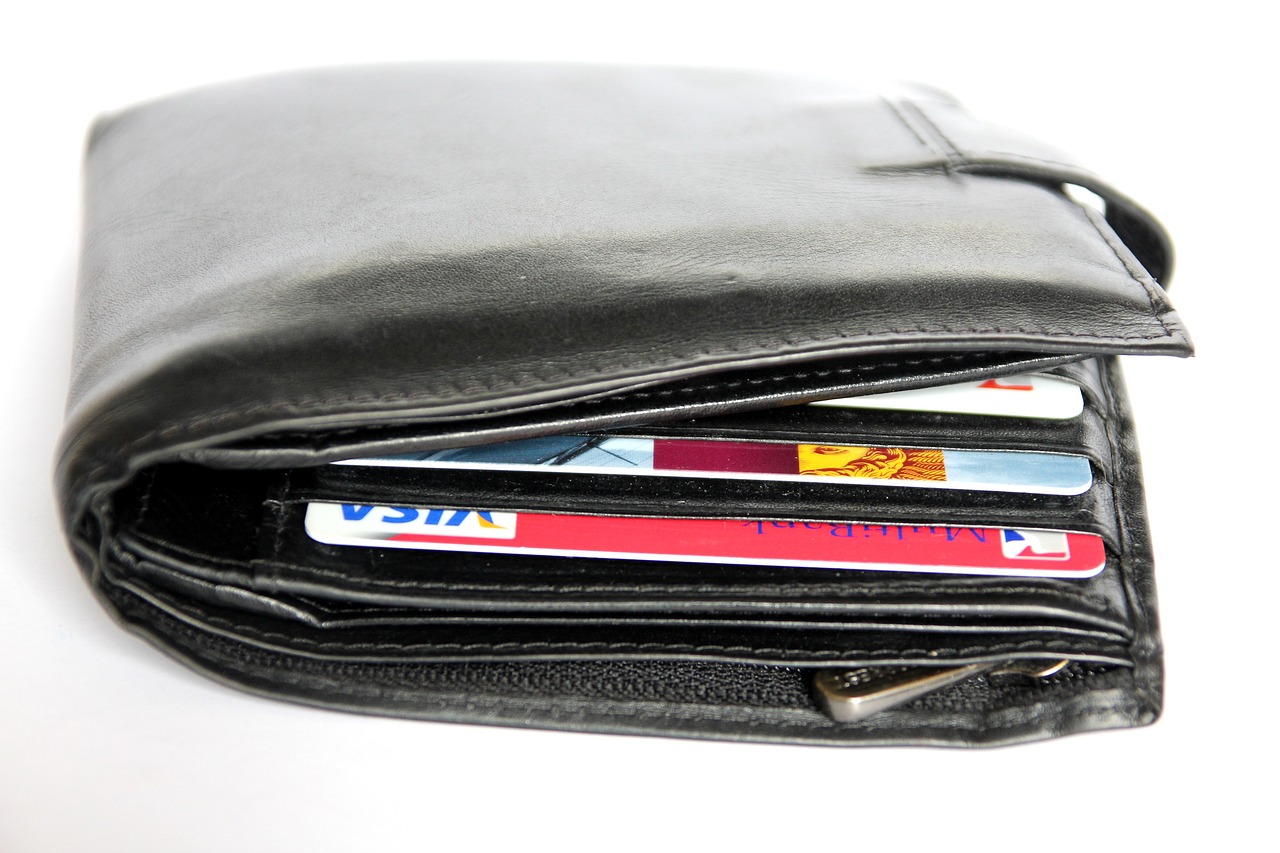
Participating in Airdrops and Giveaways
Participating in airdrops and giveaways is one of the most exciting ways to engage with the cryptocurrency community while also learning about the intricacies of digital assets. Imagine this: you’re sitting at your computer, and with just a few clicks, you can receive free tokens simply for being part of a project’s community. It’s like finding a treasure chest in your backyard, and who wouldn’t want that? Airdrops are essentially free distributions of tokens or coins to numerous wallet addresses, usually as a part of a marketing strategy to promote a new cryptocurrency or project.
To participate effectively, you need a crypto wallet set up and ready to go. This is where your earlier efforts in understanding wallets will pay off. Airdrops often require you to hold a specific cryptocurrency in your wallet or complete certain tasks, such as following social media accounts, joining Telegram groups, or sharing posts. It’s important to stay engaged and informed because the requirements can vary significantly from one project to another.
Here’s a quick overview of how to get started:
- Research Airdrop Opportunities: Websites like Airdrops.io and CoinMarketCap’s Airdrop section list ongoing airdrops.
- Follow the Instructions: Each airdrop will have specific requirements. Make sure to read the rules carefully to avoid missing out.
- Secure Your Wallet: Always ensure your wallet is secure. Beware of phishing scams that may target airdrop participants.
Participating in giveaways is similar but often involves contests or promotional events where you can win tokens by completing tasks or simply being lucky. It’s a fun way to learn about various cryptocurrencies and their ecosystems while potentially earning some tokens in the process. Just remember, while the allure of free tokens is enticing, always do your due diligence to ensure the projects are legitimate and not scams.
As you engage in airdrops and giveaways, you’ll naturally start to understand the dynamics of the crypto market better. You’ll learn how different projects operate, what makes certain tokens valuable, and how community involvement can impact a project’s success. This hands-on experience is invaluable, especially when you’re just starting your journey in the crypto world.
In summary, airdrops and giveaways are not just about receiving free tokens; they are educational experiences that allow you to dive deeper into the cryptocurrency ecosystem. By participating, you enhance your knowledge, build connections within the community, and gain practical insights that can serve you well in your future investments.
Q: What is an airdrop?
A: An airdrop is a distribution of free tokens or coins to multiple wallet addresses, typically as part of a marketing strategy for new cryptocurrencies.
Q: How do I participate in an airdrop?
A: To participate, you usually need to have a crypto wallet, follow specific instructions provided by the project, and sometimes complete tasks like sharing social media posts.
Q: Are airdrops safe?
A: While many airdrops are legitimate, it’s essential to research the project and ensure your wallet is secure to avoid scams.
Q: What are giveaways?
A: Giveaways are contests or promotions where participants can win tokens by completing tasks or through random selection.
Q: Can I lose money participating in airdrops or giveaways?
A: Generally, you won’t lose money directly by participating, but it’s crucial to be cautious and avoid sharing sensitive information or investing in dubious projects.

Tracking Market Trends
When it comes to navigating the exciting yet volatile world of cryptocurrency, understanding market trends is absolutely crucial. Imagine trying to sail a ship without knowing the wind's direction; that's what trading crypto feels like without tracking market trends. A cryptocurrency wallet isn't just a tool for storing your digital assets; it can also serve as a powerful resource for analyzing the market. By leveraging your wallet's capabilities, you can gain invaluable insights into price movements, trading volumes, and market sentiment.
One effective way to track market trends is by using the transaction history feature available in most crypto wallets. This feature allows you to view all past transactions, including the amounts and the cryptocurrencies involved. By analyzing this data, you can identify patterns in your own trading behavior and assess how they align with broader market movements. For instance, if you notice a consistent pattern of buying during market dips, you might be onto a strategy that works for you.
Moreover, many wallets provide integration with market analysis tools and platforms. These tools can help you visualize trends through charts and graphs, making it easier to spot opportunities. You might be wondering, “Where do I start?” Well, many wallets allow you to connect to APIs that provide real-time market data. This means you can see live price changes, order book data, and even social sentiment around specific cryptocurrencies. It’s like having your own mini stock market right in your pocket!
Additionally, you can track your portfolio's performance directly through your wallet. Most wallets offer features to monitor the value of your holdings over time, which can help you understand how your investments are faring in the ever-changing market landscape. This feature is particularly beneficial for beginners who are still learning the ropes. By regularly checking your portfolio, you can develop a sense of when to buy, sell, or hold based on your risk tolerance and market conditions.
To make the most out of your tracking efforts, consider the following tips:
- Set Alerts: Many wallets allow you to set price alerts. This way, you can be notified when a cryptocurrency hits a certain price point, helping you make timely decisions.
- Follow Market News: Staying updated with the latest news in the crypto space is essential. Major events can cause price fluctuations, and knowing about them can give you an edge.
- Engage with Analytics Tools: Use external analytics platforms that can provide deeper insights into market trends and forecasts.
In conclusion, tracking market trends using your crypto wallet is not just about keeping an eye on your investments; it's about becoming an informed participant in the cryptocurrency ecosystem. By utilizing the features available in your wallet and combining them with market analysis tools, you can enhance your understanding of the market dynamics and make more educated trading decisions. So, the next time you open your wallet, remember: you're not just looking at numbers; you're unlocking the potential for greater financial literacy and success in the crypto world.
Q1: How can I track market trends using my crypto wallet?
A1: You can track market trends by utilizing the transaction history feature, integrating with market analysis tools, and monitoring your portfolio's performance.
Q2: Are there specific wallets that offer better tracking features?
A2: Yes, some wallets come with advanced analytics tools and real-time market data integration, making them more suitable for tracking trends.
Q3: What should I do if I notice a significant market trend?
A3: If you notice a significant trend, consider analyzing it further and adjusting your investment strategy accordingly. Always remember to do your own research!
Q4: Can I set alerts for price changes in my wallet?
A4: Many crypto wallets allow you to set price alerts, helping you stay informed about significant market movements.
Frequently Asked Questions
- What is a crypto wallet?
A crypto wallet is a digital tool that allows you to store, send, and receive cryptocurrencies. Think of it as a bank account for your digital assets, where you have the keys to manage your funds securely.
- How do I set up a cryptocurrency wallet?
Setting up a cryptocurrency wallet is fairly straightforward. You'll need to choose a wallet type (hot or cold), download the wallet software or app, create an account, and securely back up your recovery phrase. It's like creating an online account, but with a few extra security steps!
- What are the differences between hot wallets and cold wallets?
Hot wallets are connected to the internet and are more convenient for daily transactions, but they can be less secure. Cold wallets, on the other hand, are offline storage options, making them safer from hacking but less convenient for quick access. It's like comparing a wallet in your pocket to a safe at home.
- Why is backing up my wallet important?
Backing up your wallet is crucial because it ensures that you can recover your funds if you lose access to your device or forget your password. Without a backup, you risk losing all your digital assets forever, which is like losing a key to a treasure chest!
- How can I use my wallet for educational purposes?
You can use your wallet to learn about cryptocurrencies by conducting transactions, tracking your investments, and participating in various blockchain projects. It's a hands-on way to grasp the concepts and functionalities of the crypto world.
- What are airdrops and how can I participate?
Airdrops are free distributions of tokens or coins to wallet addresses, often used to promote new projects. To participate, you typically need to have a wallet that supports the cryptocurrency being airdropped and sometimes complete specific tasks. It's a fun way to explore new coins!
- How can I track market trends using my wallet?
Many wallets offer features that allow you to monitor your investments and view market trends. By keeping an eye on price changes and market movements, you can develop your analytical skills and make informed decisions about your cryptocurrency holdings.

